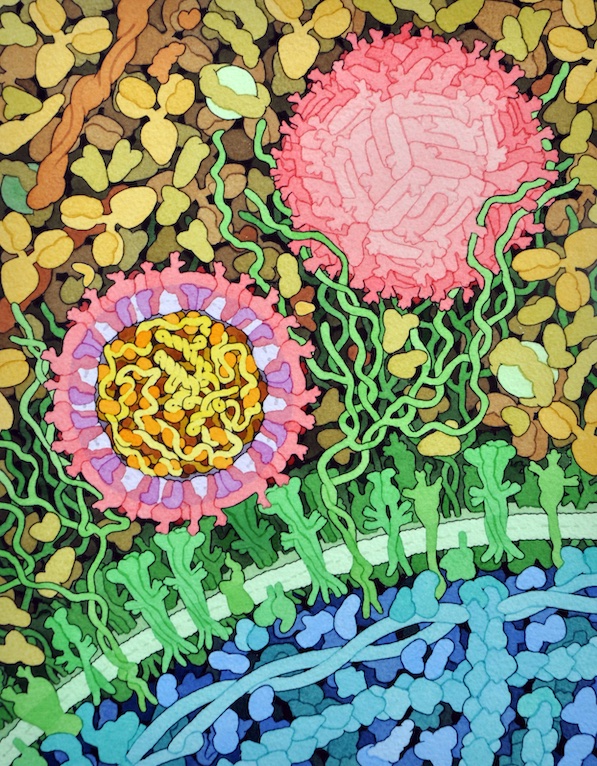Research roundup: How do different transmission chains affect the evolution of Zika virus?
February 4, 2021

Zika virus (ZIKV) is unique among viruses in its family in that it can be sexually transmitted between humans without the need for a mosquito host. However, the impact of these direct human-to-human transmission chains on the ability to alter the evolution of ZIKV remains poorly understood. A team of researchers led by Matthew T. Aliota, PhD, and Anna Jaeger, MS, PhD student, recently published a study that looks at ZIKV evolution in transmission cycles through hosts of a single species (mouse-to-mouse, mosquito-to-mosquito) and alternating species (mouse-to-mosquito) transmission chains. In this study, researchers serially infected mice or mosquitoes with ZIKV to simulate single host transmission chains, or fed mosquitoes on ZIKV-infected mice to simulate natural mosquito-borne transmission. The team found that for ZIKV transmitted through mice alone the virus more rapidly evolved and became stronger and that these changes were associated with specific mutations. Mosquito-only transmission chains and alternating transmission pathways showed little evidence for increased adaptation for these routes of transmission and mutations in the virus genome occurred randomly. The researchers acknowledge the need for future experiments to further explore the role of sexual transmission on ZIKV’s evolution, and that the methods here do not perfectly model sexual transmission. Despite this limitation, the virus’ rapid adaptation through direct vertebrate transmission chains observed by the researchers suggests that human-to-human transmission may be a more important health issue to prioritize than previously thought.
Read more in the paper published February 3, 2021, in the Journal of Virology.
Illustration by David S. Goodsell, RCSB Protein Data Bank. doi: 10.2210/rcsb_pdb/goodsell-gallery-015.


